Effective Tips on How to Properly Maintain a Tile Roof
One of the most popular roofing materials is tile and for many great reasons. They provide numerous benefits, ranging from a long lifespan to strength in withstanding harsh weather conditions. Moreover, tile roofs possess superior thermal properties reducing ambient temperatures on the roof deck, and keeping the interiors comfortable.
You can find many styles and designs of tile roofs available as well, making your home look even better. While tile roofs are known to last over 100 years, be warned. The long lifespan only comes when you give your roof modest care and maintenance.
If you’re unsure of how to properly maintain a tile roof, read on. We share helpful tips on roof maintenance to lengthen the lifespan and keep your roof functioning well.
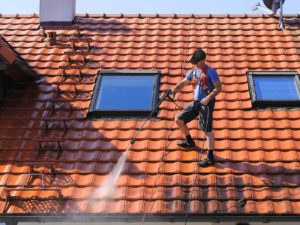
How to Properly Maintain a Tile Roof
Learning how to properly maintain a tile roof isn’t as hard as it sounds. As long as you possess the knowledge of tile roof maintenance, the easier it gets to keep a roof clean and functioning well.
Here are the major steps and tips to follow to properly maintain a tile roof yourself.
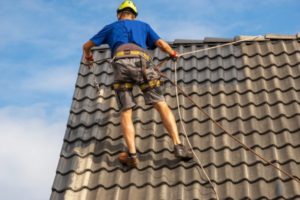
Annual Inspections are a Must
You must inspect your tile roof for any superficial problems such as cracks, leaks, mold, algae, water damage, and major signs of weather-induced damage.
While you can perform these inspections yourself, there is more to see beyond the naked eye. That’s why while it’s important to inspect your roof regularly, you will want to ask for professional help and have a contractor inspect your roof at least once a year or after major weather conditions.
A professional roofing contractor will conduct a deeper and more thorough inspection of hidden issues. The contractor has the training and experience to spot any issues invisible to the naked eye, which may result in greater damage if left untouched. We recommend inspections during the spring or fall season.
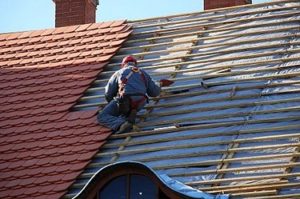
Carry Out Top Flashing
Roof flashing is done using a thin material such as galvanized steel. Expert roofing contractors will use this to keep water away from entering vital parts of your tile roof. Roof flashing would be installed around the roof features like the chimneys, skylights, and vents to ensure the water will run down the side of the flashing. It will then be directed to the tiles instead of entering your roof.
If you don’t use top flashing against the walls, there’s a high chance that water would slowly drip into the crevices between your walls and roof, making its way inside the house. This is why it’s worth asking a professional roofer about roof flashing installation, who will know the best way to go about the process.
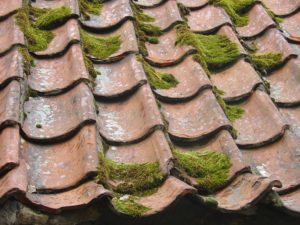
Clean Your Roof
Just like the insides of the house, your roof will require a thorough cleaning regularly. You don’t need to do it every day but at least once every few weeks. If not, then you can expect the roof to begin showing greenish color around its edges. When you clean your roof, it will stay shining and look great for years to come.
You can easily wash your clay or concrete tile roof with a power washer, though the power shouldn’t be high. You must also avoid using harmful chemicals as this would result in more damage, eroding your tiles in the future.
We highly recommend cleaning your roof with a soft wash and cleaning solution so your roof looks clean without incurring any damage. High water pressure can be used to clean your roof, provided the sprayer is at a safe distance from the tiles to avoid damage.
Regular cleaning won’t only maintain the appearance of your roof and home, but it will prolong its lifespan. If you aren’t entirely sure how to clean a roof properly or don’t have the expertise to do so, we recommend hiring a licensed roofing contractor instead.
Usually, homeowners would clean their tile roofs every other year. However, it’s best to do an annual cleaning of your roof. If you live in a dusty location, you may want to clean your roof more frequently as the added layers of deposited debris may harden, making it tougher to scrape off if you don’t clean your roof frequently. That can lead to damage to your roof and affect its appearance.
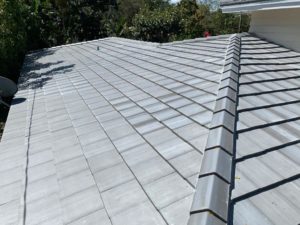
Remove Debris
One of the things you must do regularly is to clean out any debris you see from your roof. If you live in a windy location, your roof will likely receive a ton of dirt and debris. When you don’t clean them, all that debris can clog the gutters, resulting in water overflow come the rainy season.
That overflowing water during rains would leak into your home while affecting the roof integrity. Don’t wait for that to happen and clear all the debris from your roof even when it isn’t due for cleaning and washing.
Repair the Roof as Needed
Smaller repairs may be a hassle and cost you, but when you get them done as soon as possible, you will save a lot on more expenses and damage in the future. If you have broken tiles, make sure to repair or replace them once seen, which helps keep the roof intact and maintains its appearance.
Any roof damage that may lead to leaks and water seeping into the house must be repaired immediately and professionally. This is why your roof must be inspected and go through the appropriate repairs after storms r hurricanes.
Wrapping It Up
We hope that these tips on how to properly maintain a tile roof helped you out. If you’re looking for a contractor who can conduct other maintenance tasks or repairs that require professional servicing, then contact us now. Here at Stradling Roofing, we offer top-notch services you will need to help your roof last longer and stay strong despite the elements in Arizona.
